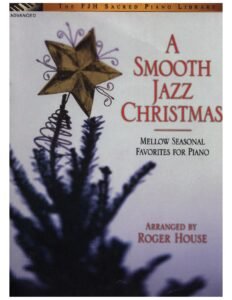I’ll Be Home for Christmas – Sheet Music (1943)
“I’ll Be Home for Christmas” is a Christmas song written by the lyricist Kim Gannon and composer Walter Kent and recorded in 1943 by Bing Crosby, who scored a top ten hit with the song. Originally written to honor soldiers overseas who longed to be home at Christmastime, “I’ll Be Home for Christmas” has since gone on to become a Christmas standard.
The song is sung from the point of view of a soldier stationed overseas during World War II, writing a letter to his family. In the message, he tells his family he will be coming home and to prepare the holiday for him, and requests snow, mistletoe, and presents under the tree. The song ends on a melancholy note, with the soldier saying, “I’ll be home for Christmas, if only in my dreams”.
The setting for the movie was based on Hammond, Indiana the hometown of author Jean Sheperd. Sheperd grew up on Cleveland St and went to Warren G. Harding Elementary School. Just like Ralphie. The house that appears in the film is located at 3159 W 11th Street, Cleveland, Ohio. For the film adaptation of these stories, director Bob Clark reportedly sent scouts to twenty cities before selecting Cleveland for exterior filming.
The flip side of the original recording was “Danny Boy.”

In 1943, “I’ll Be Home for Christmas” joined “White Christmas” to become one of America’s most popular homegrown holiday songs. Recorded in a rich baritone by Bing Crosby, “I’ll Be Home for Christmas” shot to the top ten of the record charts (as “White Christmas” had for Crosby the previous year) and became a holiday musical tradition in the United States.
I’ll Be Home For Christmas (piano solo sheet music)
Best Sheet Music download from our Library.
The label on Crosby’s recording credits “I’ll Be Home for Christmas” to Kent, Gannon, and Ram. Later recordings usually credit only Kent and Gannon. The discrepancy arose from the fact that on December 21, 1942 Sam “Buck” Ram copyrighted a song titled “I’ll Be Home for Christmas (Tho’ Just in Memory)” although, it should be noted, that version bore little or no resemblance, other than its title, to the Crosby recording.
A song titled “I’ll Be Home for Christmas” was also copyrighted on August 24, 1943, by Walter Kent (music) and James “Kim” Gannon (words). Kent and Gannon revised and re-copyrighted their song on Sep. 27, 1943, and it was this version that was made famous by Bing Crosby.
On October 4, 1943, Crosby recorded “I’ll Be Home for Christmas” with the John Scott Trotter Orchestra for Decca Records. Within about a month of its being copyrighted the song hit the music charts and remained there for eleven weeks, peaking at number three.
The following year, the song reached number nineteen on the charts. It touched a tender place in the hearts of Americans, both soldiers and civilians, who were then in the depths of World War II, and it earned Crosby his fifth gold record. “I’ll Be Home for Christmas” became the most requested song at Christmas U.S.O. shows in both Europe and the Pacific and Yank, the GI magazine, said Crosby accomplished more for military morale than anyone else of that era.
“I’ll Be Home for Christmas” was recorded by Perry Como (1946), Frank Sinatra (1957) and countless other artists. And the team of Kent and Gannon continued to write songs, although none attained the popularity of ‘I’ll Be Home for Christmas. Kent also composed the hit song, “(There’ll Be Blue Birds Over) The White Cliffs of Dover,” with the lyricist Nat Burton.
In December 1965, having completed the first U.S. space rendezvous and set a record for the longest flight in the U.S. space program, the astronauts Frank Borman and James Lovell hurtled back to earth aboard their Gemini 7 spacecraft. Asked by NASA communication personnel if they wanted any particular music piped up to them, the crew requested Bing Crosby’s recording of “I’ll Be Home for Christmas.”
